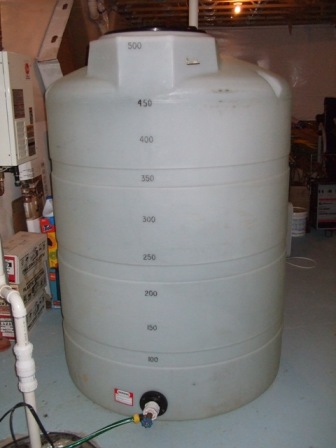
This is our 500 gallon emergency water storage tank.
*Grid Down Test One*
In the Rubicon, we say “If it hasn’t been tested, it doesn’t work”. At some point in our planning and implementation we all need to pull the plug and see how we’re really doing. We hadn’t done a Grid Down Test for some years and a lot has changed in our preparation levels and equipment so we decided to flip the main breaker off for the weekend and see what worked, what didn’t work and what we wanted to change or improve. I encourage every one of you to do the same; it’s a really enlightening experience!
We wanted to see how we did overall, but we especially wanted to see how new or modified systems worked together. I’ll discuss what went right and what went wrong after the pictures.

This is our 500 gallon emergency water storage tank.
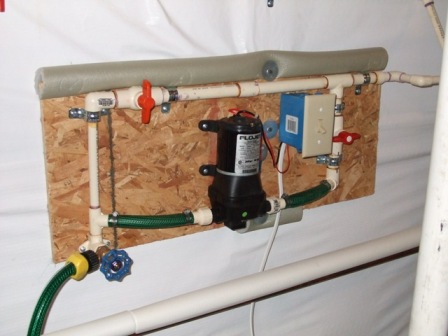
The water tank is plumbed into the regular house plumbing with this 12 Volt pump.
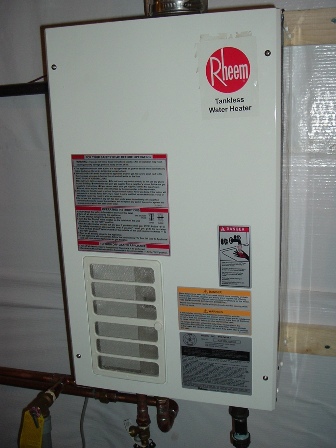
This Rheem tankless heater supplies the whole house with hot water.
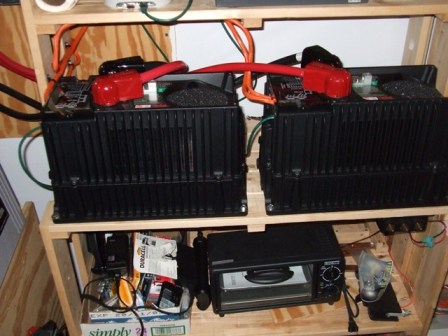
These are our Outback sine wave inverters that change DC to AC.
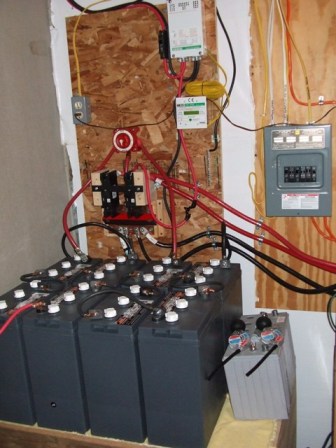
These are the new L16 batteries.
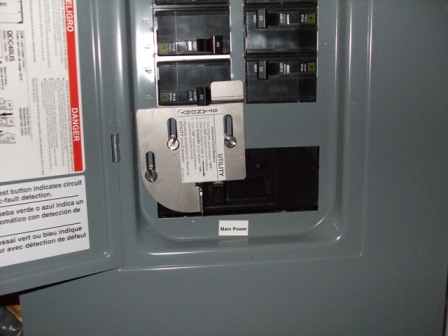
The propane generator interlock.
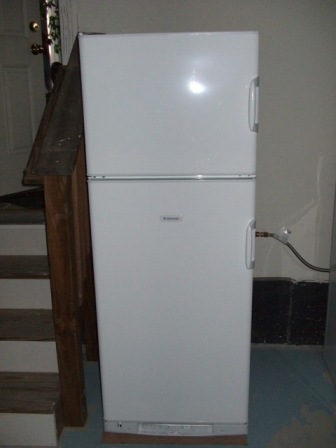
Our AC/Propane powered refrigerator.
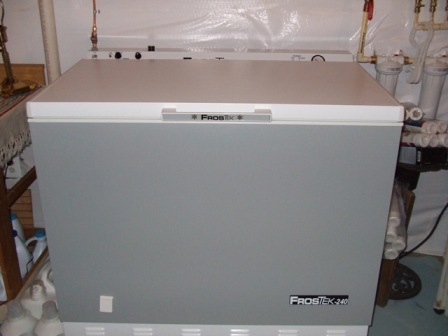
Our propane chest freezer.
The Scenario:
Simple – commercial power is down and it isn’t coming back up any time soon. The only resources available to us are those that we have on hand – no running to the store for those few items that we never got around to taking care of.
What we did:
What went right?
2. The AC/Propane refrigerator was on the grid so we switched from AC to propane and it worked fine. We even remembered to switch it over to gas minutes after the grid was disconnected.
3. The regular AC upright freezer worked fine with alt power. For the 2 day test we actually could have just unplugged it but if this had been a brown fan situation we would have wanted to use it so we went ahead and powered it.
4. The regular AC refrigerator worked fine with alt power. Additionally, it has the water in the door feature which passes through a carbon filter which removed the chlorine bleach taste from the emergency water supply. Also made plenty of ice in the automatic ice maker. We actually weren’t planning to run the kitchen fridge in a fan situation because we calculated that there wouldn’t be enough solar power for both the freezer and the fridge but for this test we went ahead and stressed the system.
5. The emergency water system worked flawlessly, pressurizing the whole house and supplying both cold and hot water to drink, cook, wash and shower with. It has its own 12VDC battery and is completely isolated from all other electrical systems. Water is important so we took special care to make sure it will work when needed and it did.
6. The alternate energy system worked well but needs some improvement which I’ll discuss below. The normal fridge and freezer continued to run. All the TV’s, radios, computers, routers and such continued as normal to the point where if we were in the living room, bedroom or basement we would forget that the grid was off line.
7. The generator transfer switch worked fine. This bracket cost $65 and the double pole breaker was another $30 so for under $100 we have a safe method of powering the main breaker box with the genny. The inlet for this transfer switch goes to a receptacle on the outside of the house and can be powered from the 7kW stationary propane generator, the 6kW “portable” diesel generator or the 3.5kW gasoline generator.
8. Once started, the propane generator was a joy. The Guardian fixed mount generator isn’t as quiet as a Honda but its insulated enclosure makes it hard to hear running a hundred feet away or so. It pumped water from our well into the 500 gallon tank without any strain at all. The really nice thing about propane engines is that there isn’t any gasoline in the carburetor to get all gummed up and the propane stores “forever”. It’s also pretty easy to store large quantities of fuel.
9. The propane range also worked perfectly. This range is out in the garage and is part of our canning kitchen so its use is well known to us. It’s important to practice with what you’re going to use in an emergency so we went ahead and cooked meals with it. Nothing fancy going on here; just a lower tech, reliable solution.
10. The battery backed overhead garage door openers worked like the manual said they would.
What went wrong?
2. One of the Outback inverters failed to transfer generator power and would drop its loads (the other one worked fine). Replacement circuit cards are on the way from Outback under warranty.
What needs to be improved?
2. We need to have a fresh look at the alt power outlets. In this house I choose to pull the power cables out of the regular breaker box and wire them into an inverter breaker box which is an OK idea but it’s getting hard to manage due to the numerous circuits in the new house. For instance we wanted to power the microwave in the kitchen so I wired “kitchen receptacles” to the alt power breaker box – turns out there are 2 kitchen receptacle circuits in the kitchen as well as separate circuits for the dishwasher, microwave and refrigerator.
3. As predicted, the solar system was unable to produce enough power to keep *everything* up 24/7. This was mainly impacted by adding the normal refrigerator to alt power, which uses around 1,400W per day, but was also due in part to the many parasitic loads like night lights, power “off” TV’s, radios, VCRs, DVDs, FAX machine, copier and the like that draw a few watts but do them 24 hours per day, which adds up over time. We also have two 900W UPS’s for the main computer and network gear that appear to suck more than their share of power – I’ll have to measure that. The good news is that calculations showed we’d run out of battery power sometime Sunday morning and sure enough we did. The goal is to be able to run from the batteries not less than 2 full days before having to fire up the generator. If we took the regular fridge off the alt power system we would meet this goal but we’ve decided we like the filtered fridge water and ice cubes so we’ll be expanding the solar system.
All in all this was a very good test. I hope you enjoyed reading about it and got some ideas. Mostly I hope you try the same thing yourself real soon, because until you test your systems, they don’t work!
Spitfire
www.alpharubicon.com
All materials at this site not otherwise credited are Copyright © 1996 - 2007 Trip Williams. All rights reserved. May be reproduced for personal use only. Use of any material contained herein is subject to stated terms or written permission.